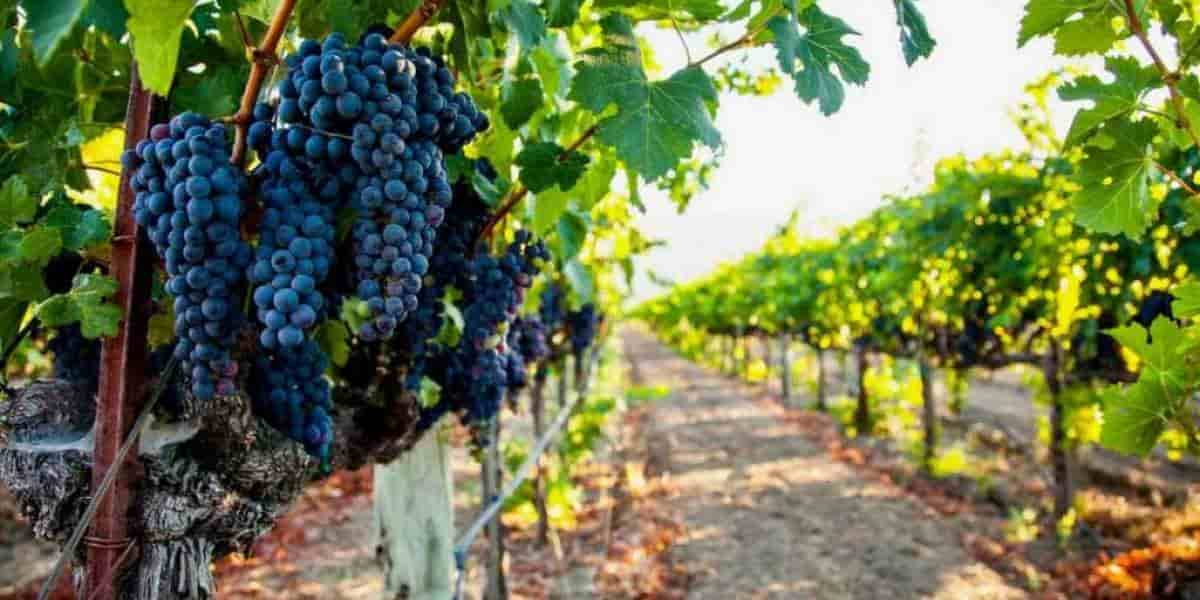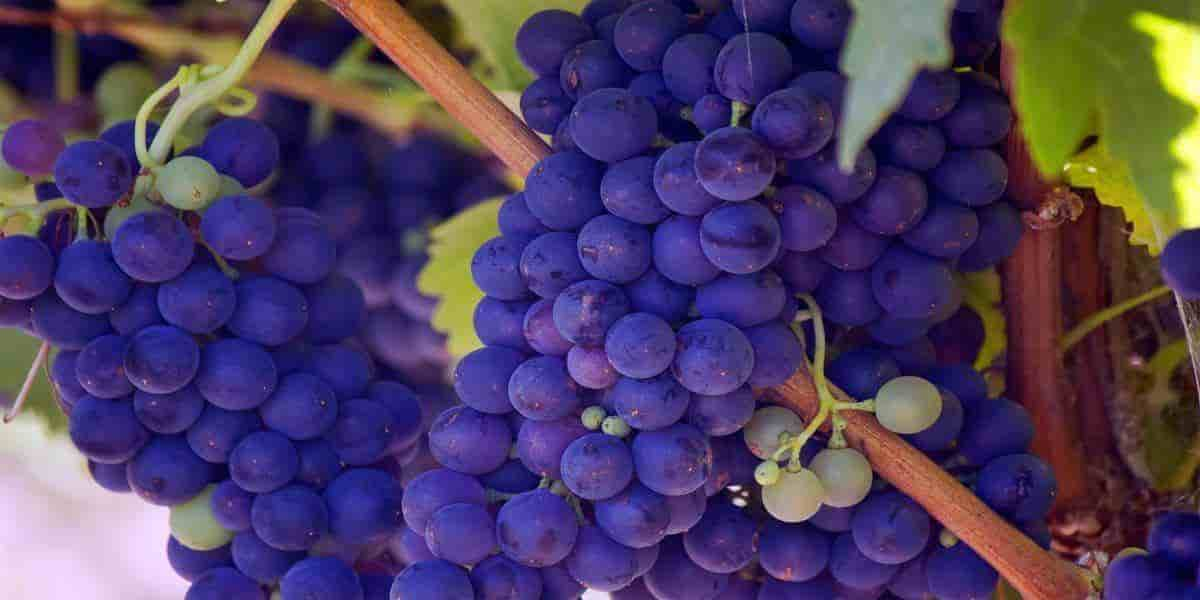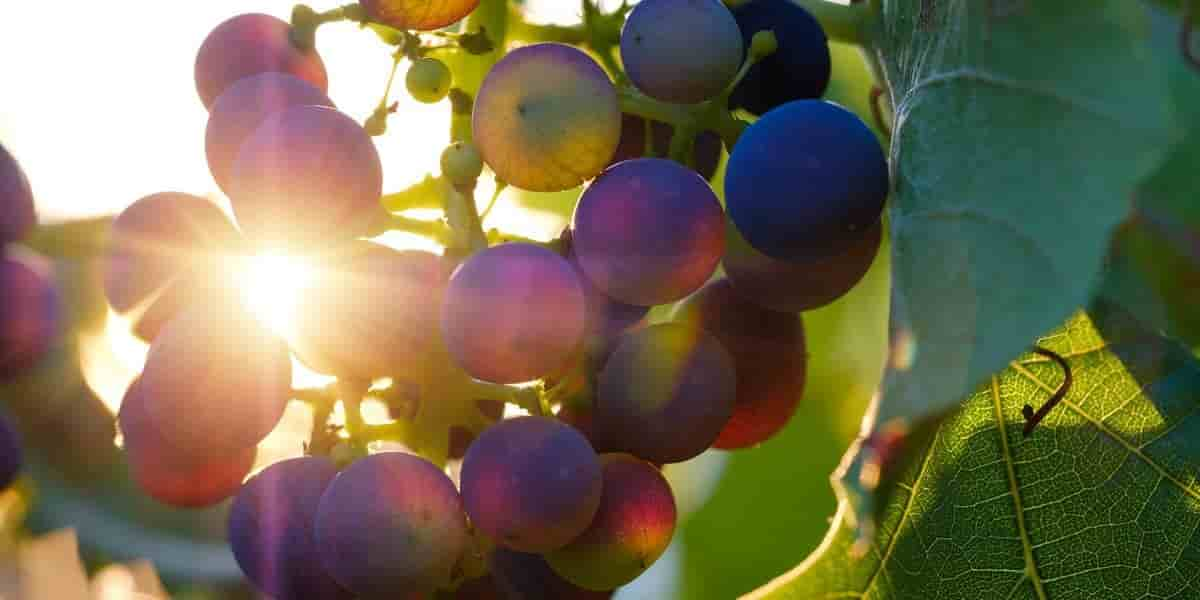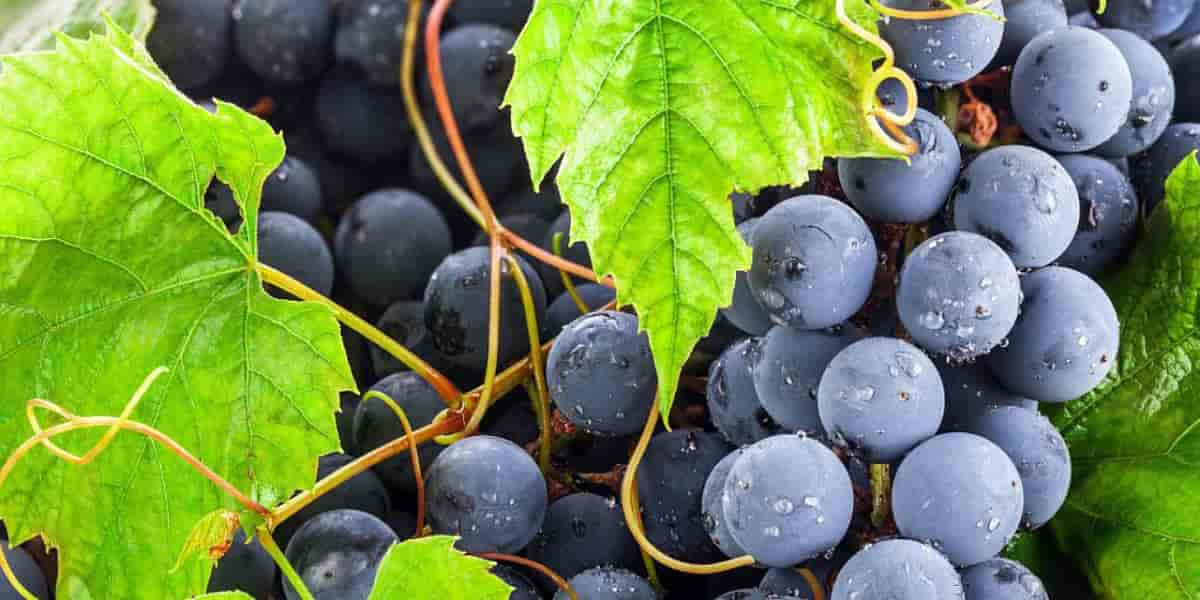Grape production - if done on a rational and scalable basis - can be a good source of long-term income as it has a decent benefit for producers and exporters. However, viticulture, whether for raw consumption or winemaking, is an option that "hits" you and your land for at least two decades. Thus, this decision requires extensive research and a clear plan of action. First of all, you need to know that many countries have very strict rules regarding the granting of licenses to grow grapes. Secondly, it is always better to have your land (at least 4-5 hectares), because growing grapes requires years of exploitation in the field. The average grape plant matures and produces a maximum yield about 7-8 years after planting. Thus, if you are considering renting a farm, the fixed costs will increase, and no one can assure you that you will be able to occupy the area a decade from now. In short, the vine is a perennial plant, which has many growing techniques. As a rule, winemaking varieties ripen and produce good yields about 7-8 years after planting. On the other hand, contemporary table grape varieties (designed for the consumption of raw grapes) can reach maturity and maximum yield only two years after planting. They can continue to produce well for 15-17 years, after which most table grape growers plow and destroy the crop because it is no longer able to produce well. Most commercial grape growers start their vineyards from grafted plants. However, in some countries where the soil is free of vegetative bacteria, they may prefer autogenic plants. It is important not to plant a new vineyard on the same site where an old vineyard was recently removed. The soil there is likely to be depleted and possibly infected. The period between replanting can be from 2 to 5 years.  Variety selection is very important. Each vine variety has unique characteristics that can only be expressed in specific climatic and soil conditions and growing techniques. Variety selection is a limiting factor when growing grapes. Rootstocks and cultivars should be consistent - and of course, choosing the right variety for your climate is important. In general, vines prefer warm, dry summers and cool (not cold) winters, soils with a clay content of less than 25%, and a small percentage of gravel, although again this depends on the type of rootstock. A large amount of organic matter is also required. High levels of humidity during the summer can increase fungal infections. Temperatures below -3°C (27°F) during spring or below -15°C (5°F) during dormancy will damage wood, young shoots, and buds. In addition, the soil temperature must be above 5 °C (41 °F) so that the vine can recover as much organic matter in the soil as possible. Optimal pH and relative humidity levels depending on the species. In general, optimum pH levels range between 6.5 and 7.5. However, some varieties grow well with levels close to 4,5 or 8,5. Once you have sorted out all the bureaucracy and diversity, you have to start the pre-planning processes. Grape growers save that time on the land and any previous crops. However, a heavy harvest on sloping lands can have unpleasant consequences, such as erosion. Steep areas need leveling. If not, water will likely drift from the upper levels and collect at lower levels, causing waterlogging to occur. Next, growers install drip irrigation systems when it comes to irrigated gardens. When they are ready to plant, they make small holes in the ground, where they plant the plants. Fertilizers, drip irrigation, and weed management are used in most cases. After transplanting, it is time to apply the vine shape and training methods. Depending on the type of vineyard, environmental conditions, soil, harvesting techniques, and of course the experience of each grape grower, there are several training systems to choose from. Growers shape their vines using supports and pruning. In most cases, this process requires 2-3 years in wine-making varieties and 1-2 years in table grape varieties.
Variety selection is very important. Each vine variety has unique characteristics that can only be expressed in specific climatic and soil conditions and growing techniques. Variety selection is a limiting factor when growing grapes. Rootstocks and cultivars should be consistent - and of course, choosing the right variety for your climate is important. In general, vines prefer warm, dry summers and cool (not cold) winters, soils with a clay content of less than 25%, and a small percentage of gravel, although again this depends on the type of rootstock. A large amount of organic matter is also required. High levels of humidity during the summer can increase fungal infections. Temperatures below -3°C (27°F) during spring or below -15°C (5°F) during dormancy will damage wood, young shoots, and buds. In addition, the soil temperature must be above 5 °C (41 °F) so that the vine can recover as much organic matter in the soil as possible. Optimal pH and relative humidity levels depending on the species. In general, optimum pH levels range between 6.5 and 7.5. However, some varieties grow well with levels close to 4,5 or 8,5. Once you have sorted out all the bureaucracy and diversity, you have to start the pre-planning processes. Grape growers save that time on the land and any previous crops. However, a heavy harvest on sloping lands can have unpleasant consequences, such as erosion. Steep areas need leveling. If not, water will likely drift from the upper levels and collect at lower levels, causing waterlogging to occur. Next, growers install drip irrigation systems when it comes to irrigated gardens. When they are ready to plant, they make small holes in the ground, where they plant the plants. Fertilizers, drip irrigation, and weed management are used in most cases. After transplanting, it is time to apply the vine shape and training methods. Depending on the type of vineyard, environmental conditions, soil, harvesting techniques, and of course the experience of each grape grower, there are several training systems to choose from. Growers shape their vines using supports and pruning. In most cases, this process requires 2-3 years in wine-making varieties and 1-2 years in table grape varieties. 
grape producers
At present, China is the most populous country in the world in terms of grape cultivation. This country ranks first among grape producers with an annual production of nearly 14 million tons of grapes. As a rule, a large part of this production is exported. Grapes have long been welcomed by people in different countries. Grape cultivation has a specific temperature range. The minimum temperature for its cultivation should not be less than 15 degrees below zero. And the maximum temperature for growing this fruit should not exceed 40 degrees Celsius. As a result, certain countries will have the best conditions for the cultivation of this fruit. Sufficient space will also be required. Because this fruit must have rows of ships with a suitable distance from each other. Therefore, having a suitable cultivated area is also one of the factors. It is effective in planting grapes. In second place is Italy with a production of 8 million tons. This country is also favorable for growing grapes because of its good climate. The third place belongs to the United States. This big country with the production of 6 million tons of grapes in 2019 is currently the third record holder, and the state of California is responsible for the majority of this production. In fourth place is Spain with a production of 5. 7. France is in fifth place with 5.5 million tons, Turkey is in sixth place with 1.4 million tons, India is in seventh place and Chile is in eighth place with 2.7 million tons. Once the trellis is applied and shaped, they begin their annual work schedule, which includes pruning, deadhead removal, defoliation, and thinning of the vines. Some grape growers remove most of the developing shoots during the growing period to encourage the plant to devote its resources to fewer but higher-quality fruits. Of course, not all grape growers prefer this method.  It is important to monitor the crop almost daily during the growing season to prevent the spread of diseases and other adverse conditions. Harvesting can be done manually with scissors or knives, or mechanically by tractors. However, table grapes can only be harvested by hand. Each method has its pros and cons. The traditional vineyards of Europe that produce high-quality, low-yielding wines are hand-harvested. It is difficult to generalize grape harvest times. It is a combination of diversity with climatic conditions, soil characteristics, and growing techniques. Sometimes we can harvest grapes on the same date we harvested last year. Even in the same field, with the same types of vines, the timing of vine harvesting may vary. In general, we can say that in the northern hemisphere, most varieties ripen from August to November, while in the southern hemisphere they ripen from March to August. After harvest, grape growers carefully separate healthy grapes from the diseased, carefully clean them, then cool and store them for sale raw or start the wine-making process. After harvesting and leaf fall, the vine periodically goes into a dormant period.
It is important to monitor the crop almost daily during the growing season to prevent the spread of diseases and other adverse conditions. Harvesting can be done manually with scissors or knives, or mechanically by tractors. However, table grapes can only be harvested by hand. Each method has its pros and cons. The traditional vineyards of Europe that produce high-quality, low-yielding wines are hand-harvested. It is difficult to generalize grape harvest times. It is a combination of diversity with climatic conditions, soil characteristics, and growing techniques. Sometimes we can harvest grapes on the same date we harvested last year. Even in the same field, with the same types of vines, the timing of vine harvesting may vary. In general, we can say that in the northern hemisphere, most varieties ripen from August to November, while in the southern hemisphere they ripen from March to August. After harvest, grape growers carefully separate healthy grapes from the diseased, carefully clean them, then cool and store them for sale raw or start the wine-making process. After harvesting and leaf fall, the vine periodically goes into a dormant period. 
grape exporters
European countries are in first place in the export of fresh grapes Asian countries are in second place. Statistics also show: From a continental perspective, suppliers in European countries have set the highest dollar value of fresh grapes in international markets during 2020. Thus, they have exported a total of 2.5 billion dollars, which is equivalent to 27.5% of the world's grapes. Statistics say: that Asian exporters are in second place with 26.3%. While 22.7% of the world's grape shipments were sent from Latin America, and thus they are in third place.
- Top 5 exporters of grapes in the world
Statistical data says: In 2020, China, Peru, Chile, Italy, and the United States were the top 5 exporters and supplied more than half of all fresh grapes sent to the world market. Statistics show that: China, as the largest exporter in 2020, has sent more than one billion dollars of fresh grapes to the world markets and has a 13% share of this market. The statistics also show that Peru also has an export value of 991 million dollars and is in the second position of exporters with an 11% share of the market.  On the other hand, the statistics say: that Chile also had an export of 924 million dollars during the mentioned period and as the third best exporter, it registered a share of 9% of the market. According to the published data: Italy has an export value of 832 million dollars and the United States has an export value of 822 million dollars, and thus they are in fourth and fifth place in the world. The statistics also show that: the "Netherlands, South Africa, Spain, Australia, Hong Kong, India, Egypt, Turkey, Uzbekistan and Brazil" are ranked 6th to 15th in the world. In this way, the top 15 countries have sent more than 93% of the newly exported grapes to the world markets. Among continents, exporters in Europe sold the highest dollar value of fresh grapes on international markets in 2021, valued at $2.66 billion or 28.6% of the global total. Exporters in Asia came in second place with 23.6% while 23.5% of global sales of fresh grapes came from Latin America, including the Caribbean, excluding Mexico. Fresh grape exporters in North America achieved a value of 9%, mostly outperforming African suppliers in Australia and New Zealand with 11.2% and Oceania with 4%.
On the other hand, the statistics say: that Chile also had an export of 924 million dollars during the mentioned period and as the third best exporter, it registered a share of 9% of the market. According to the published data: Italy has an export value of 832 million dollars and the United States has an export value of 822 million dollars, and thus they are in fourth and fifth place in the world. The statistics also show that: the "Netherlands, South Africa, Spain, Australia, Hong Kong, India, Egypt, Turkey, Uzbekistan and Brazil" are ranked 6th to 15th in the world. In this way, the top 15 countries have sent more than 93% of the newly exported grapes to the world markets. Among continents, exporters in Europe sold the highest dollar value of fresh grapes on international markets in 2021, valued at $2.66 billion or 28.6% of the global total. Exporters in Asia came in second place with 23.6% while 23.5% of global sales of fresh grapes came from Latin America, including the Caribbean, excluding Mexico. Fresh grape exporters in North America achieved a value of 9%, mostly outperforming African suppliers in Australia and New Zealand with 11.2% and Oceania with 4%. 
grape benefit
Here's what the experts say about grape benefits: According to the American Heart Association, although there is no universally accepted superfood list, most nutritionists and experts agree that when incorporated into a balanced diet, superfoods are very beneficial for your heart and overall health. The health benefits of grapes begin inside the skin, where they contain phytonutrients - phytochemicals that contain disease-fighting compounds. The health benefits then extend to fruit polyphenols, which are powerful antioxidants that fight cancer, Alzheimer's, and heart disease. But the benefits hardly stop there. Watch how humble grapes can help these six areas of your body.
- Refreshes the skin
They can protect your skin from carcinogenic UV rays and free radicals that can cause wrinkles and dark spots to a lesser extent. The added vitamin C is essential for your skin to produce collagen, which helps give your face the power of radiance. 
- Brain benefits
Resveratrol is a grape health benefit that continues to impress! Studies conducted at the University of Switzerland found that the compound helps fight tartar and free radicals that can damage the brain and possibly lead to Alzheimer's disease. It also helps increase blood flow to the brain, which increases mental agility.
- Promotes a healthy heart
The health benefits of grapes extend to your heart (which is why so many people say red wine is good for the heart!) What is it? A fancy term for a type of heart disease caused by a buildup of cholesterol in the walls of the arteries of the heart and brain - not good!
- Brightens eyes
The vitamin A and lutein present in grapes can boost the health of your eyes. Although you may be familiar with vitamin A, you may not be familiar with lutein.  It's a substance also found in a variety of vegetables, and the retina builds up as a way to protect itself from free radicals, which can cause unnecessary stress, damage, and degeneration. According to a study conducted by researchers at the University of Miami's Bascom Palmer Eye Institute, grapes may also help fight eye diseases.
It's a substance also found in a variety of vegetables, and the retina builds up as a way to protect itself from free radicals, which can cause unnecessary stress, damage, and degeneration. According to a study conducted by researchers at the University of Miami's Bascom Palmer Eye Institute, grapes may also help fight eye diseases.
- Strengthens the bones
Last (but not least) manganese is a health benefit of grapes that helps strengthen your bones. What is manganese? It is a mineral that is already present in small amounts in our bodies. It contributes to bone health (by allowing your body to better absorb calcium and make the enzymes needed to build bone), but it also boosts your metabolism, regulating hormones and blood sugar. If you want to get these benefits, contact us for ordering organic grapes.
